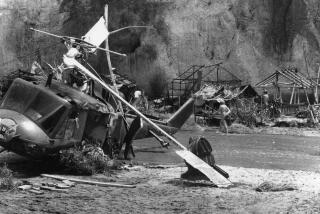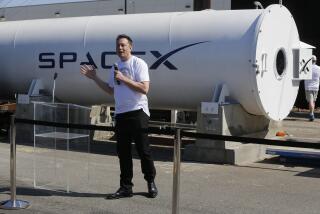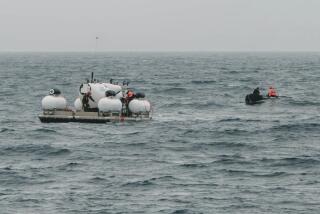Criminal Law and the Shuttle : Scrutiny Is Due Managers Who Expose Others to High Risk
- Share via
With President Reagan’s shuttle commission now into its second month of investigating the causes of the explosion of the Challenger and the deaths of the seven crew members, public attention is turning to the legal ramifications of the disaster.
Remarkably, the legal speculation so far has been limited to the possibility of the victims’ families seeking damages for wrongful death by filing civil lawsuits against either the National Aeronautics and Space Administration or the corporate manufacturers of the space-shuttle equipment. There has been little public discussion of a possible criminal investigation into the matter, despite the increasing number of prosecutions of corporations for negligent or reckless homicide in connection with work-related or product-related deaths. These prosecutions have pivoted on evidence of employer or manufacturer knowledge of serious risks of injury or death--evidence similar to that disclosed in connection with the deaths of the seven shuttle crew members.
Criminal enforcement is the state’s most powerful tool for punishing and deterring anti-social conduct. While it should not be cavalierly activated, neither should it be lightly ignored. When evidence of corporate or government-agency knowledge of grave risk emerges in connection with work- or product-related deaths, the possibility of a criminal investigation should not be excluded from the public debate as it has been in the discussion of the Challenger deaths. The evidence thus far revealed is enough to push the shuttle investigation from the realm of simple negligence to that of extreme negligence or recklessness, and should transform an accident investigation into a criminal investigation.
Several engineers at Morton Thiokol, the manufacturer of the solid-fuel boosters, have told the presidential commission that they unanimously argued against the launching of the shuttle because they feared that the cold temperatures registered overnight would cause the solid-rocket-booster O-ring seals to fail. NASA officials, they said, tried to pressure them to change their recommendation. The failure of the seals is a prime focus of investigation as a possible cause of the explosion. Thiokol management, at the time trying to win a new booster contract from NASA, overruled its own engineers and gave NASA approval for the launching.
The Thiokol engineers also disclosed an internal memorandum of July, 1985, in which one engineer warned that a “catastrophe of the highest order--the loss of human life”--could occur if the booster’s seal problems were not corrected. A second engineer warned in an August, 1985, memo that the shuttle must “stop flying” until the problem with the joints was solved.
The lack of public discussion of possible criminal investigation into the shuttle disaster probably has much to do with the fact that as citizens we tend to think of crime as committed in the streets and not in the suites. When asked to “name a crime,” most people cite burglary or robbery, not death on the job or death by product.
But prosecutors around the country are beginning to realize that a three-piece suit should not protect a manager who has put the lives of other human beings at unacceptably high risk of serious injury or death. For instance:
--In Illinois, a Cook County judge found three executives of Film Recovery System Inc. guilty of the murder of an employee overcome by cyanide at a company plant. The three executives were sentenced to 25 years in prison and fined $10,000 each. The prosecution argued that the defendants knew about the cyanide-fumes problem in the plant and that the workers often complained about feeling ill.
--In Michigan, an Oakland County prosecutor charged three officers of an Ohio cable firm with involuntary manslaughter in connection with the death of a worker who was killed by carbon-monoxide poisoning while working in a company van. The prosecution is alleging that there were huge rust holes in the van and that there was no tailpipe. Trial is pending.
--In California, the Los Angeles County district attorney charged five people, including film director John Landis, with involuntary manslaughter in connection with the deaths of actor Vic Morrow and two children when a low-flying helicopter crashed into an area where they stood during the filming of a segment of the movie “The Twilight Zone.” The prosecution says that it will present evidence showing that, just a couple of hours before the crash, Landis was warned that special-effect explosives on the ground were placing the helicopter in a dangerous situation. Trial has been set for this summer.
This emerging realization that managers--be they corporate or governmental--must be held accountable if they put the lives of other humans at high risk of injury or death, when juxtaposed with the facts revealed thus far in the shuttle investigation, raises a vital question deserving of official and public scrutiny: Did the seven Challenger crew members die as the result of an accident, or was it a crime?
Russell Mokhiber is an attorney with the Washington-based Corporate Accountability Research Group.
More to Read
Inside the business of entertainment
The Wide Shot brings you news, analysis and insights on everything from streaming wars to production — and what it all means for the future.
You may occasionally receive promotional content from the Los Angeles Times.










